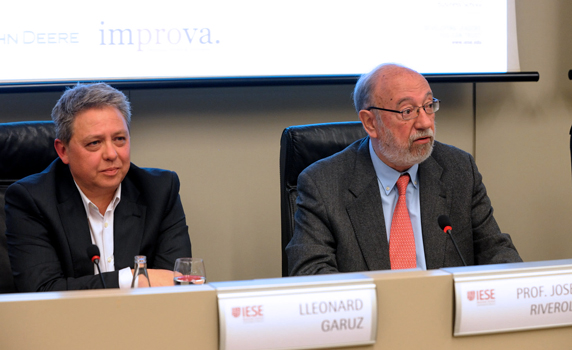
“Operations are nothing more than a mix of activities necessary for delivering a product or service to a client with the best guarantee. But in the world of art and entertainment, this process means starting from a single idea and giving it form until you have outlined all the details,” said Lleonard Garuz, former technical director of the Gran Teatre del Liceu.
Garuz spoke to IESE Business School alumni recently about the processes that allow an internationally-renowned opera house to work perfectly and at a frenetic pace. His presentation formed part of the Continuous Education Program and was held on March 12 on IESE’s Barcelona campus. To understand the level of management complexity of operations at the Gran Teatre del Liceu between 1999 and 2010 – the period when Garuz held his position – the context needs to be clearly described.
According to Garuz, the decade he spent as head of operations was marked by intense competition among theaters of similar caliber, as well as economic growth. “It was not a about having bigger audiences than others, but to have more prestige and excellence. This is what made us work to have a high level of activity,” he said. “Other important factors were that our budget was smaller than the average for these types of institutions, despite the economic situation at the time. Also the Liceu had just been rebuilt, after burning down in 1994, so we had to show the world all its splendor.”
Organization and commitment
Following a rigorous plan of objectives – which each year defined the number and type of works and stage set ups needed to compete with the world’s best theaters – and taking into account the opportunities the newly-reconstructed building offered, the management defined a personnel structure, an organogram and a system of process planning.
“We adapted personnel and the budget each season to meet certain standards and work in the way we wanted to. But in reality, it was only possible because people in the theater world loved their work above all else. Without this level of dedication from everyone, the success we experienced would not have been possible,” he said.
On an operational level, the most interesting and complicated process was integrating daily activities with preparations, rehearsals and new performances, he said. And because there is only one stage at the Liceu, bottlenecks were inevitable and had to be perfectly managed.
“There was no time for delays. To be able to manage everything, we had to start planning projects two years in advance, going through each and every one of the required processes until the day of the opening performance and transforming the initial project into a plan that included all the theater’s activities - day after day, hour after hour - so we could fit new stage set ups into an endless schedule.”
INEO – Initiative for Excellence in Operations
The Continuous Education session “Opera and Operations in a Large Theater: Competitiveness and Productivity” was moderated by IESE Prof. Josep Riverola, who also presented a new project, the Initiative for Excellence in Operations (INEO). Within the framework of IESE’s International Center for Logistics Research, the INEO seeks to generate new knowledge on operations management and technology in business through the exchange of experiences and dialogue among academics and business leaders.